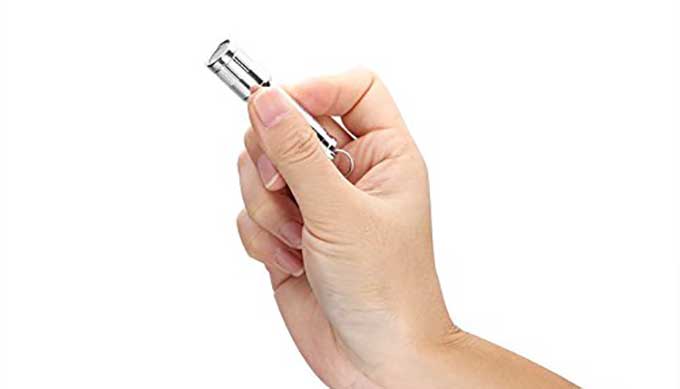Olight i3E flashlight

Best AAA keychain light
The Olight i3E is a tiny flashlight, meant for a keychain. It is similar to the Streamlight Nano (which I have also owned), so I will compare it to that.
Advantages:
– It takes a single AAA battery, which you are likely to have in your closet already. It can also take AAA size rechargeable NiMH batteries, like the storied Panasonic Eneloops. (It will not take lithium batteries.) The Nano takes weird LR-41 button batteries, which you likely have to order.
– Nonetheless, it is tiny, at about 2.3 inches long. (The Nano is about 1.5 inches long. – It produces far more light than the Nano. The regular versions produce 90 lumens, and the Silver and Copper versions produce 120 lumens. The Streamlight Nano produces 10 lumens.
– (Like the Nano,) it has only two settings: On and Off.
– (Like the Nano,) the switch is just a head that you rotate. But unlike the Nano, the i3E shows no tendency to unscrew itself and thereby disassemble itself in your pocket. The Nano is notorious for dropping the head and batteries somewhere without your noticing, leaving only the rear case attached to your keychain. The usual remedy was a few turns of Teflon plumber’s tape.
– It has an actual TIR (Total Internal Reflection) lens, a combination reflector and lens which together provides a nice, narrow beam pattern, with a very bright hot spot and usable light in a cone around it. The lens also protects the LED from dust and wear. The Nano looks like it could have a reflector, but it really has a bare LED with its molded on lens. Accordingly, its throw pattern is less focused, and can throw glare in your eyes.
– It is relatively cheap, at only $13 or so, although the Nano is about $9.
Disadvantages: – It only has one setting, on or off. It doesn’t have a low or high setting. Olight has similar lights with hi/lo/medium settings, but they are bigger and more expensive.
– The twist switch (as such) is a little awkward for signaling SOS or other Morse code messages.
– It is more expensive than the Nano, though it is cheaper than most other LED flashlights.
Purchasing notes: I got the silver version for the slight bump in output (from 90 to 120 lumens.) The finish is silvery PVD, and after a few weeks, it has some scratches, but otherwise seems to be holding up. I expect the functional parts of it, like the LED, the case, etc. to last forever.
So. Not the absolute smallest or cheapest, but surprisingly bright, relatively cheap, with well-designed optics (and it actually has optics.)
04/26/17Olight 90 Lumens AAA Flashlight 120 Lumens ($14) / International Amazon link









